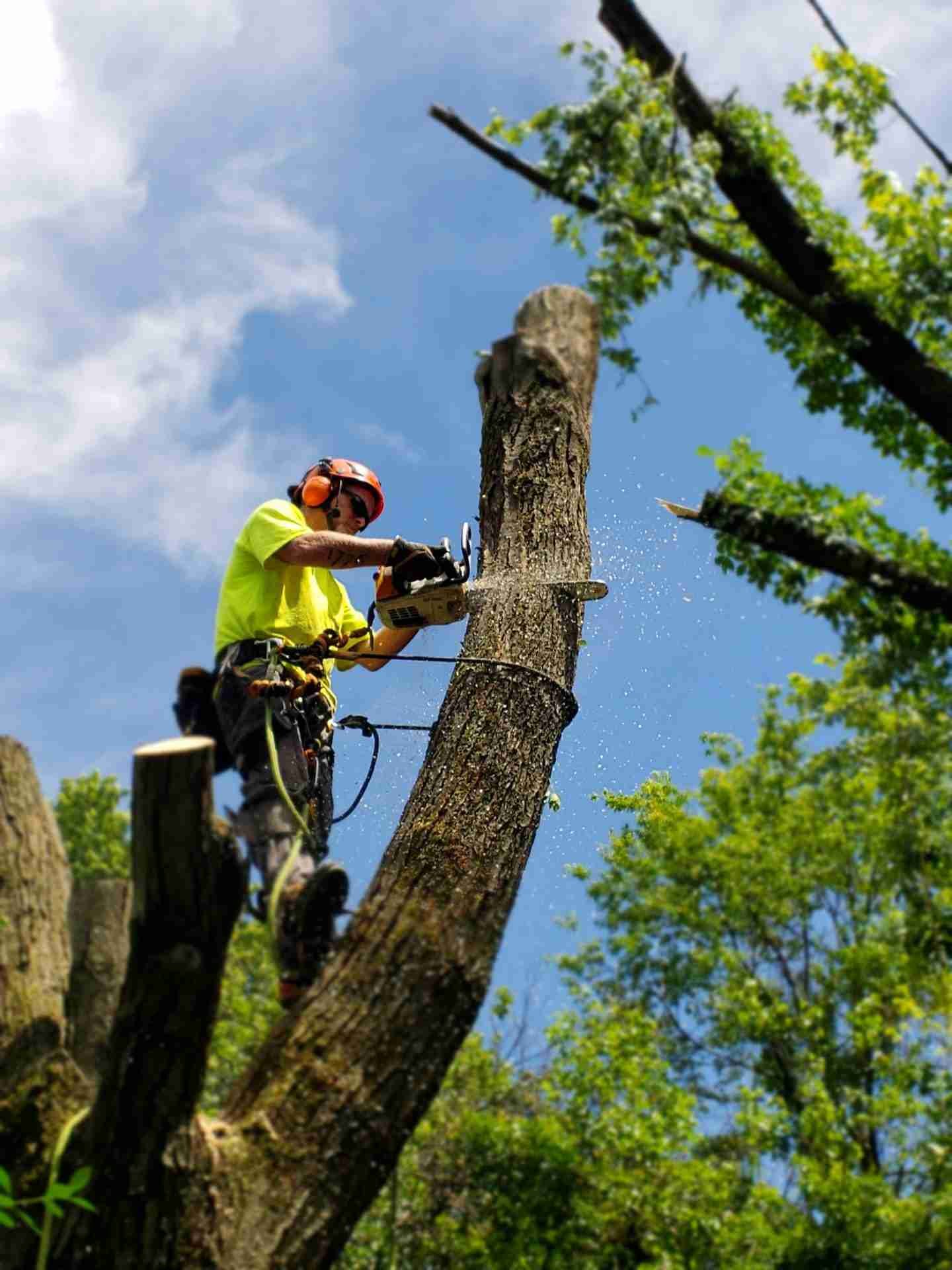Trees add beauty, shade, and value to your property, but sometimes even the healthiest-looking trees may hide problems that require serious attention. While regular tree trimming and tree pruning are essential for maintaining a tree’s health, there are moments when removal becomes the safest and most practical option.
But how do you know when to stop trimming and start considering Henderson tree removal? What signs should homeowners watch for to protect their property and loved ones?
In this guide, we’ll explore the key indicators that signal it’s time to call in the professionals for tree removal, and how proper maintenance—including smart lawn fertilization and working with a reliable sprinkler contractor—plays a role in overall yard health.
Why Not Just Keep Trimming or Pruning?
Tree trimming and tree pruning are vital to remove dead or weak branches, improve tree structure, and encourage healthy growth. However, these practices are not cure-alls:
• Repeated trimming of damaged or diseased branches may only delay the inevitable if the core of the tree is compromised.
• Over-pruning can stress trees, weakening their natural defenses.
• Some problems lie deep in the trunk or root system, beyond what pruning can fix.
Understanding when maintenance turns into removal is crucial for safety and landscape health.
What Are the Warning Signs That Signal Tree Removal?
1. Extensive Dead Branches and Canopy Decline
A few dead branches can be normal, but when a large portion of the canopy is dead or thinning, it often signals disease, pest infestation, or structural failure.
Tip: If you notice widespread leaf loss or a brittle canopy despite seasonal care like tree trimming, consult an expert.
2. Cracks or Splits in the Trunk or Major Limbs
Visible cracks, splits, or cavities can indicate internal decay, reducing the tree’s structural integrity.
Warning: These defects increase the risk of branches or the entire tree falling during storms.
3. Fungal Growth or Mushrooms at the Base
Fungi and mushrooms growing on or near the trunk usually mean the tree is decaying from the inside out.
4. Leaning Tree or Shifting Soil
A tree leaning noticeably or soil upheaval around roots often points to root damage or instability, a severe safety concern.
5. Pest Infestation That Compromises Tree Health
While some pests can be managed with tree pruning, infestations like beetles or borers that kill large portions of the tree may require removal.
6. Damage From Storms or Construction
Trees with large broken limbs, uprooted roots, or structural damage after storms or nearby construction often need removal.
How Does Lawn Fertilization Impact Tree Health?
While trees and lawns require different nutrients, a healthy lawn supports overall landscape wellness, which indirectly benefits trees:
• Proper lawn fertilization improves soil conditions, encouraging beneficial microorganisms that also aid tree roots.
• Avoiding over-fertilization prevents nutrient runoff that could harm tree health.
• Balanced fertilization can reduce weed growth, decreasing competition around trees.
Why Work With a Sprinkler Contractor?
Water management is key to both lawn and tree health:
• An experienced sprinkler contractor ensures your irrigation system delivers water efficiently without overwatering.
• Overwatering can weaken roots and promote fungal diseases, sometimes hastening tree decline.
• Proper irrigation helps maintain soil moisture at optimal levels, supporting both tree roots and lawn turf.
Can Tree Trimming or Pruning Prevent Tree Removal?
While tree trimming and tree pruning extend tree life by removing dead or hazardous branches, these methods have limits:
• Regular maintenance can delay decline but cannot save trees with severe root damage or internal rot.
• Pruning should be done by professionals to avoid injuring the tree further.
• Pruning also promotes safety by eliminating weak branches that could fall.
When Is It Time to Call Professionals for Tree Removal?
If you observe any of the signs mentioned or suspect your tree poses a risk, it’s essential to contact certified arborists or tree service experts who can:
• Assess tree health accurately.
• Determine if tree pruning can help or if removal is necessary.
• Perform tree removal safely without damaging surrounding property.
• Advise on aftercare, including soil treatment, lawn fertilization, and irrigation adjustments with a sprinkler contractor.
Quick Checklist: Is Your Tree a Removal Candidate?
• More than 30% of branches are dead or dying.
• Cracks or splits visible on trunk or limbs.
• Mushrooms or fungal growth near roots.
• Noticeable lean or unstable root zone.
• Severe pest infestation.
• Significant storm or construction damage.
If you tick any of these boxes, it’s time to seek professional advice.
Tips to Maintain Healthy Trees and Avoid Premature Removal
• Schedule regular tree trimming and tree pruning with certified arborists.
• Practice balanced lawn fertilization to support soil and root health.
• Work with a knowledgeable sprinkler contractor to optimize watering.
• Inspect trees seasonally for early signs of trouble.
• Avoid damaging roots during landscaping or construction projects.
Conclusion
While trees are invaluable assets to your property, not every tree can or should be saved. Recognizing the signs that call for tree removal can protect your home, family, and the beauty of your landscape.
Regular tree trimming and tree pruning are essential for maintenance, but they have their limits. Combining professional tree care with smart landscape management—including proper lawn fertilization and irrigation from a trusted sprinkler contractor Henderson NV —helps create an environment where trees thrive and risks are minimized.
Don’t wait for a hazardous situation to arise. When in doubt, consult with professionals who can assess your trees’ condition and guide you toward the best course of action. Your safety and the longevity of your landscape depend on timely, informed decisions.
